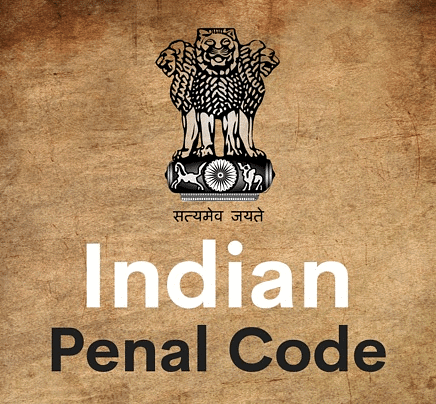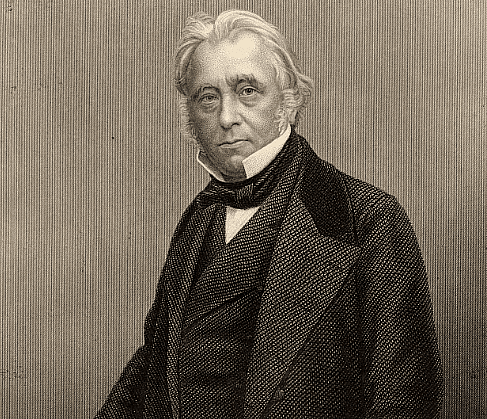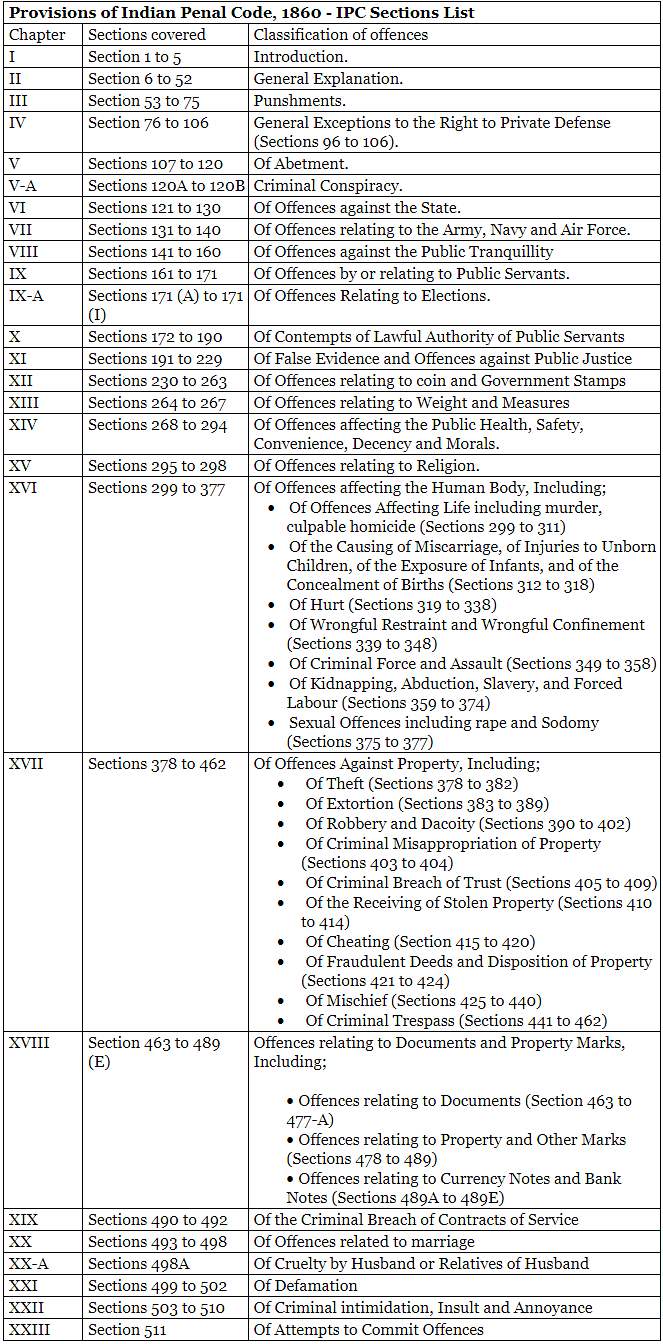Indian Penal Code (IPC) - CLAT PDF Download
| Table of contents |

|
| Latest Update |

|
| What is the Indian Penal Code (IPC)? |

|
| History Of Indian Penal Code |

|
| Indian Penal Code - Structure & Provisions |

|
| Significance of Indian Penal Code |

|
| Criticism Related to IPC |

|
The Indian Penal Code (IPC) was established during British rule in 1860 on the recommendations of the first Law Commission of India, which was established in 1834 under the Charter Act of 1833 and was led by Thomas Babington Macaulay. However, the Code went into effect on January 1, 1862, and applied to the entire then-British India, except the princely states. After Independence, the Government of India adopted it as the criminal code of the Republic of India. It is a comprehensive code that applies to all Indian citizens and covers all aspects of criminal law. Since India's independence, the IPC has undergone numerous revisions and now includes a number of additional criminal statutes.
Latest Update
The Bharatiya Nagarik Suraksha Sanhita, 2023 was presented in the Lok Sabha on August 11, 2023. It replaces the Code of Criminal Procedure, 1973. This Code outlines processes for arrest, prosecution, and bail for offences under various acts, including the Indian Penal Code of 1860.

What is the Indian Penal Code (IPC)?
The Indian Penal Code is the basic governing statute in India for determining criminal liability for the offences specified in it, as well as declaring exceptions to the question of criminal liability for the offences specified in the Act.
- It is a comprehensive code that addresses all substantive aspects of criminal law.
- Substantive laws are those that define civil law rights and responsibilities, as well as crimes and punishments in criminal law.
- For example, Substantive Criminal Law defines what constitutes ‘Robbery’', ‘Assault’ ‘Murder’, etc.
- It outlines the characteristics of crimes and the sanctions for committing them.
- Each offence is well defined in it, with all of the necessary elements constituting the offence included.
- Thus, the IPC is the law that defines the punishable offences, as well as their punishments or penalties or both.
- It applies to any Indian citizen or person of Indian origin.
- It is divided into 23 chapters and has 511 sections.

History Of Indian Penal Code
The Indian Penal Code has its roots in the times of British rule in India. It is known to have originated from British legislation account of its colonial conquests, dating back to the year 1860. Before the East India Company drafted the Indian Penal Code, the Mohammedan law was in effect in India. Mohomedan criminal law applied to both Hindus and Muslims.
- In 1834, the First Law Commission, led by Thomas Babington Macaulay, drafted the Indian Penal Code under the Charter Act of 1833, which was submitted to the Governor-General of India Council in 1837, but it was again revised.
 Thomas Babington Macaulay
Thomas Babington Macaulay
- The Code was completed in 1850 and presented to the Legislative Council in 1856; however, it did not take its place in British India's statute book following the Indian Rebellion of 1857.
- It was finally passed into law on October 6, 1860, after a careful revision by Barnes Peacock, who later became the first Chief Justice of the Calcutta High Court.
- The Code became effective on January 1, 1862. Unfortunately, Macaulay died near the end of 1859, and he did not live to see his masterpiece become law.
- It was applicable to entire then-British India.
- However, until the 1940s, it did not apply automatically to the Princely states, which had their own courts and legal systems.
- In its 42nd Report in 1971, the Law Commission proposed revising the IPC, and as a result, several changes were made to it.
- On September 6, 2018, the Supreme Court of India decriminalised homosexuality (Section 377 of the IPC).
- Similarly, On September 27, 2018, a five-judge Constitution bench of the Supreme Court unanimously ruled to repeal Section 497 (Commonly known as adultery).
- The code took effect in Jammu and Kashmir on October 31, 2019, as a result of the Jammu and Kashmir Reorganisation Act of 2019, and it replaced the state's Ranbir Penal Code.
Indian Penal Code - Structure & Provisions
There are 23 chapters and 511 sections in the India Penal Code, which can broadly be classified into four categories:
- Chapters I to V: are deal with general matters relating to the extent, definitions, principles of liability, etc.
- Chapters VI to XV: are deal with public matters between individuals and the state.
- Chapters XVI to XXII: are primarily concerned with criminal offences committed by individuals against individuals or legal entities other than the state.
- Chapter XXIII: is residuary in nature, establishing the principles of punishment for attempting to commit an offence where no specific provision has been made.
The table summarises the code's basic structure:

Significance of Indian Penal Code
The Charter Act of 1833 established a single legislature for the entire country in order to achieve uniformity of laws and judicial systems throughout British India. It is still the common-law world's longest-serving criminal code.
- Presently, It is India's main criminal code, and each offence has been well defined, providing all of the necessary elements.
- It defines what constitutes a crime and the penalties for committing such a crime.
- Further, It serves as a reference guide for all rules governing decision-making and punishment in cases of fraudulent activity or misconduct.
- This document focuses on all of the major offences that are prevalent in society.
- It includes all relevant criminal offences dealing with crimes against the state, public offences, armed forces offences, kidnapping, rape, murder, etc.
- It also covers religious and property offences, as well as a section on marriage offences, cruelty from husbands or relatives, defamation, and so on.
- In the introduction chapter of IPC, it is stated that the provisions of the Penal Code apply to any offence committed by:
- Any Indian citizen living outside or beyond India; and
- Any person on any ship or aircraft registered in India, regardless of location.
- The punishments in IPC are classified into five categories (Sections 53 to 75 of the IPC in Chapter III): death, life imprisonment, general imprisonment, forfeiture of property, and fine.
- In addition to the general substantive criminal law codified in the Indian Penal Code, 1860, the Central and State Legislations have passed numerous laws that are a part of the country's penal code to address particular issues.
- Information Technology Act
- Narcotics and Psychotropic Substances Act
- Prevention of Corruption Act
- Indecent Representation of Women Act, etc.
Criticism Related to IPC
The Indian Penal Code is a 160-year-old official criminal code of India. It was established by the British Government in 1860 and is primarily based on the principle of "master and servant," which is still followed today. The Code has not been completely amended since its introduction. Some major criticisms of the IPC are listed below;
- The code has several Sections such as 153A, Section 153B, Section 295A, and Section 505 that make the promotion of enmity in society a criminal offence. However, there is growing criticism of these sections in the country due to their misuse against creative, literary, and educational work.
- Similarly, the Use and Misuse of Sedition Law (Section 124A of the Indian Penal Code) is a colonial-era relic that is unfit for Indian democracy today.
- The argument for repealing Section 295A, which was added to the law in 1927, is that blasphemy is an offence that has no place in a liberal democracy.
- Another criticism is the compatibility of Section 149 IPC (unlawful assembly) with Fundamental Rights.
- Further, Many of the most serious offences listed in the IPC do not have appropriate punishments, resulting in inequity.
Conclusion
The Indian Penal Code has opened a new chapter in the Indian legal system. It has provided the foundation for all types of legal interventions. It is a comprehensive code that addresses nearly every substantive aspect of criminal law. It is divided into four sections and contains 23 chapters and 511 sections. For the last 160 years, it has been in operation as a significant substantive penal law of India.
FAQs on Indian Penal Code (IPC) - CLAT
| 1. What is the Indian Penal Code (IPC)? |  |
| 2. What is the history of the Indian Penal Code? |  |
| 3. What is the structure and provisions of the Indian Penal Code? |  |
| 4. What is the significance of the Indian Penal Code? |  |
| 5. What are the criticisms related to the Indian Penal Code? |  |














